
3 of Hong Kong’s best Japanese restaurants with modern tweaks
From rustic home-made dishes to traditional Osaka cuisine with a contemporary touch, this trio of dining establishments offers some pleasant surprises

Hongkongers love their Japanese food. Restaurant listings website OpenRice has about 2,200 entries in its Japanese category, compared to about 2,500 entries for Cantonese, Hong Kong’s representative and most common cuisine.
But while most Japanese outlets offer traditional culinary styles such as sushi and yakiniku, a few new places are putting a modern spin on the cuisine. At Koko, for example, there’s plenty of raw fish, but it’s nothing like a traditional sushi restaurant.
“As there are so many traditional Japanese restaurants already, we wanted to offer something different,” says Koko’s head chef Alex Wong.
The restaurant calls itself an izakaya, a Japanese pub of sorts, with a menu of rustic, home-made dishes that go well with drinks. But with its oversized terrace and sleek, moody decor, it’s worlds away from the rowdy places found in Tokyo neighbourhoods. Instead, Koko’s takes its inspiration from the concept of “social dining”, as Wong calls it, reflecting the fact that izakaya are also popular spots in which to socialise.

The restaurant is a collaboration between private members’ club Kee and former Japanese soccer star Hidetoshi Nakata, who now promotes Japanese sake culture, not least through his own brand, Sake ‘N’. Not surprisingly, it offers a wide range of sake matched with food.
A number of dishes are presented as easy-to-share small bites, such as red mullet escabeche, which Wong says is inspired by sashimi and its Peruvian cousin, ceviche. “By soaking it in sour sauce and adding vegetables and a touch of spice, it offers another way to enjoy raw fish, with more flavours and [texture], and it matches with sake very well. We use Japanese techniques and ingredients but we don’t necessarily stick to Japanese recipes.”
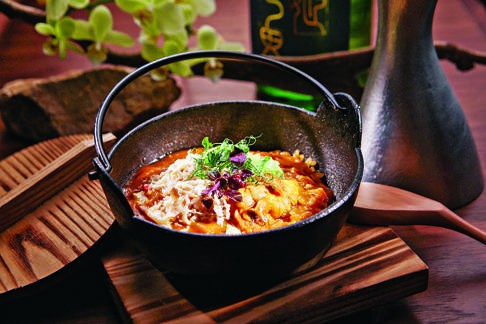
For the king crab and uni hotpot, which is inspired by donburi, a Japanese rice bowl, Wong uses Arborio rice to cook a risotto as the base. “I have experience working in Japanese, French and European restaurants, therefore I like to experiment with merging different types of cuisine to create new dishes. This one is to use one of my strengths, cooking risotto, with popular Japanese ingredients to create a tasty dish.”
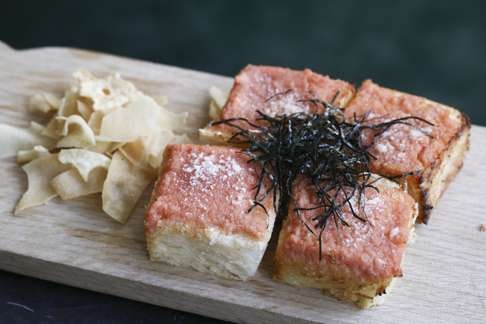
At URA, director Alfred Chang serves “traditional Osaka cuisine with a nice modern touch” such as mentaiko on toast – a play on grilled mentaiko, a popular bar snack. “Serving it on toast with parmesan cheese will balance out the flavour of mentaiko. After baking it for five minutes, both the mentaiko and parmesan cheese will blend in so well that you can enjoy the best of both flavours at the same time.”
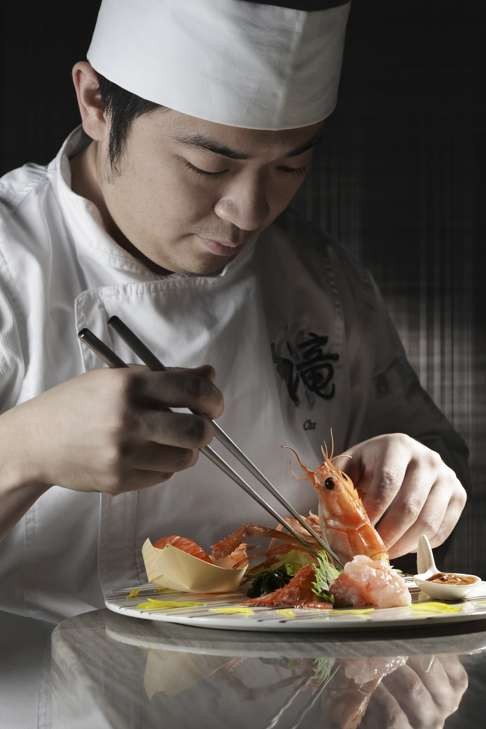
Raki head chef Jack Yan also takes inspiration and ingredients, from all over the globe. “Olive oil, Smoking Gun [food smoker], paraffin paper ... These are [not often seen] in traditional Japanese cuisine. Nevertheless, I am a true believer of using these innovative elements”.
The restaurant, dominated by a counter not unlike a traditional sushi-ya, pushes the envelope with dishes that include oysters cooked sous vide, in a water bath at 50 degrees Celsius. Yan says: “Slow cooking is seen [mostly in] Western culinary styles, but I use this method to make slow-cooked oysters [as this method creates] the sweetness of cooked oysters and crisp texture of the raw oysters at the same time.”
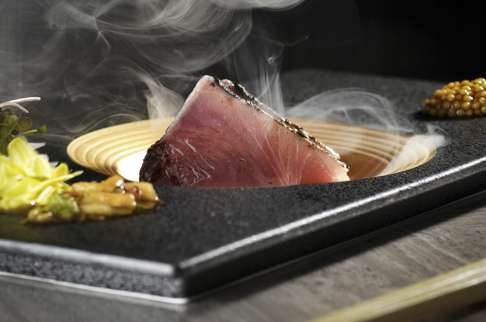
Another of Yan’s creations is oak-smoked fish – sashimi served under a dome of smoke. Yan says he got the idea from eating fish chargrilled on bamboo leaves in Japan. “Smoked with spirit-soaked oak wood and with the help of the Smoking Gun, the fish is aromatised, as these flavours enter the very core of the fish.”
This sort of tableside theatre isn’t uncommon in modern Japanese restaurants. URA’s sukiyaki is sweetened with a cloud of cotton candy instead of regular sugar. Chang says: “It’s boring to use traditional sugar as sukiyaki, and cotton candy will visually increase [diners’] appetites,” but aside from the sugar component, he says it’s a traditional sukiyaki. “The dish itself is very traditional and only the presentation is modern to create a fresh image of Japanese cuisine.”
Despite the experimentation, these restaurants are conscious of not straying too far from some key tenets of Japanese cuisine. Yan says: “There are a few fundamentals. For example, some ingredients we use are essential, including soy sauce, vinegar and other sauces that no other ingredients can replace. We also [emphasise] the rice we use. As rice is the core ingredient in Japanese cuisine, and we only use the ‘new’ rice that is freshly grained by our special rice mill machine to guarantee the provision of fresh rice.”
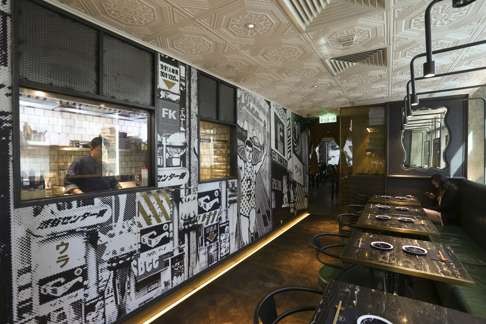
Chang says URA uses ingredients exclusively from Osaka, while Wong says the traditions they uphold aren’t limited to ingredient choices. Attitude and philosophy – “attention to detail, and treating every dish with a great amount of respect” – are crucial.
Yan says his team also takes traditional Japanese service style to heart. “We strive to maintain the traditional cultures and spirit among staff and the way we interact with our customers. The chef’s cleanliness and appearance are crucial to us. The traditional white chef’s uniform represents the image of tidiness and our respect for the food we serve, as well as our customers.”
Koko
5/F Carfield Building, 77 Wyndham St, Central, tel: 2109 1777
Raki Japanese Fine Dining
15/F Cubus, 1 Hoi Ping Rd, Causeway Bay, tel: 2782 0010
URA Japanese Delicacy
2/F The Wellington, 198 Wellington St, Sheung Wan, tel: 2111 9381